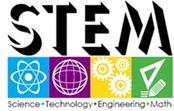 STEM subjects (the academic disciplines of Science, Technology, Engineering, and Mathematics) are important, but can be difficult to teach. There are a lot of complicated concepts to get across to students who are just starting to learn. However, one computer science teacher has found an effective way to get through to them using stories as teaching tools.
STEM subjects (the academic disciplines of Science, Technology, Engineering, and Mathematics) are important, but can be difficult to teach. There are a lot of complicated concepts to get across to students who are just starting to learn. However, one computer science teacher has found an effective way to get through to them using stories as teaching tools.
Lev Fruchter was an English teacher who was asked to take on teaching math as well—but rather than split the subjects up, he merged them into a double period, choosing stories that embodied mathematical concepts. He has carried this on in his current class, using stories like “The Ones Who Walk Away from Omelas” to discuss equations, or “The Lady or the Tiger” to discuss binary code.
Using literature in this way has allowed Fruchter to make his computer science math classes entirely project-based, which in turn draws the interest of kids who might not have otherwise liked computer programming. “They’re very happy to be in a math or computer science class where they’re not having tests or doing quizzes or being asked to do sheets and sheets of problems,” Fruchter said.
This idea makes a great deal of sense. We humans love stories, and we look for stories in our daily lives, even when they may not necessarily be there. (That’s where conspiracy theories come from.) It’s just the way our brains work. Using stories as a method of introducing complicated concepts so students can understand them is a great idea, and I hope it gets used more widely. Who knows, perhaps it can keep them more interested in reading, too.

































I’m sure that some students who might not be receptive to the traditional ways of teaching STEM subjects would be receptive to this approach.
I am also sure that some students who fit the old way of teaching STEM subjects like a round peg fits into a round hole would find this new approach confusing and difficult to follow.
What I am absolutely convinced of is that there is no such thing as a perfect method that can be used successfully with every child. People, including children, are different. Some will respond better to one method, others will respond better to a second method.
What is really required in education, in my humble opinion, is to abandon the mass production system that is currently in place, where every student is taught in the same way, and is expected to make progress at the standard rate. Instead we need to teach some students in one way, and other students in a different way; and we need to allow for the fact that some students will progress faster or slower than others.
This, however, would require us to spend more on education, to have smaller class sizes, and to offer a variety or approaches to teaching every subject. Yes, exactly… it won’t happen in my lifetime.